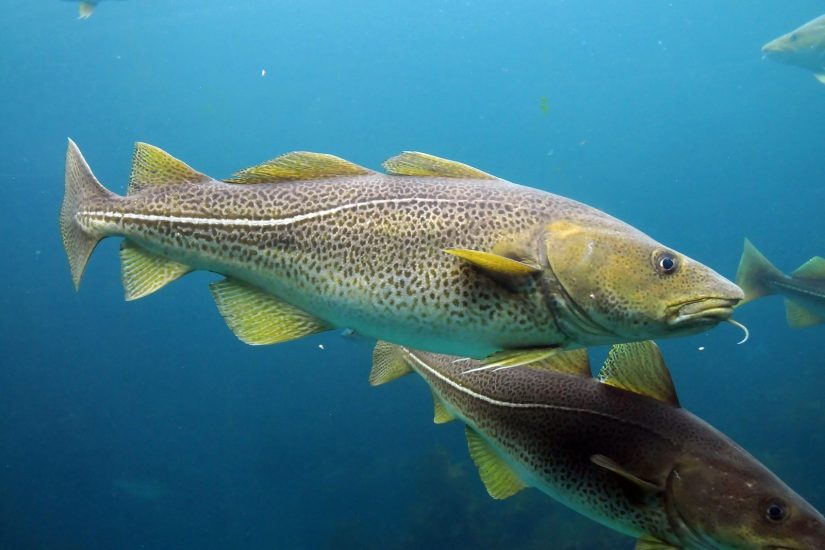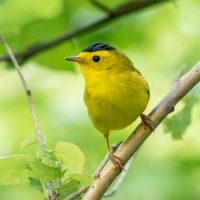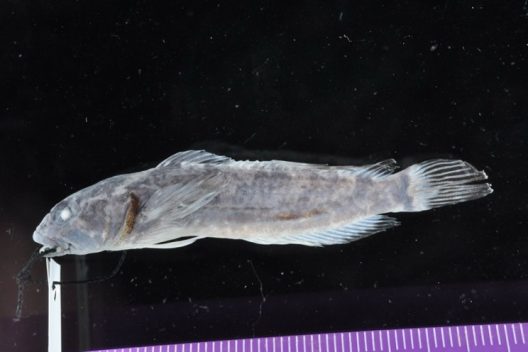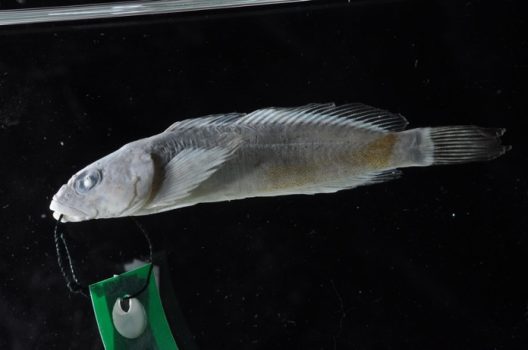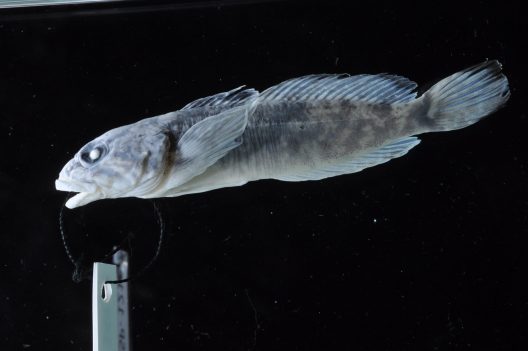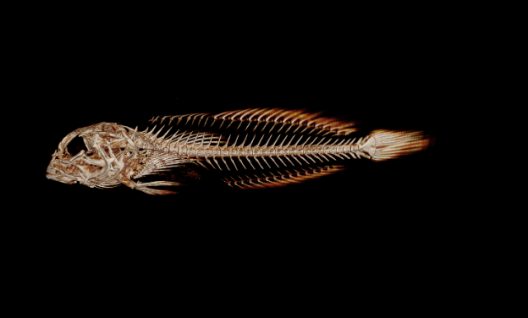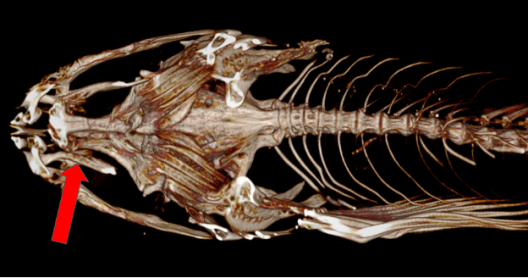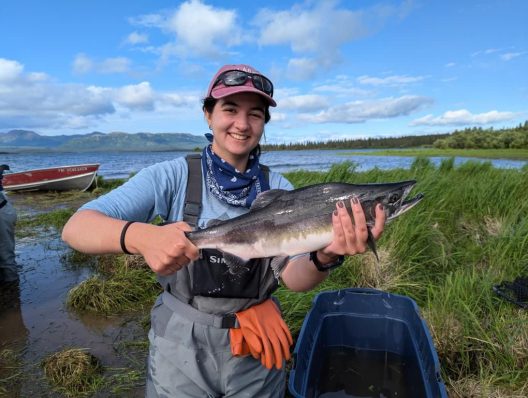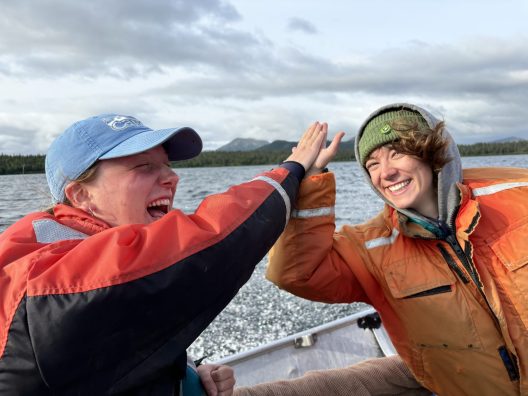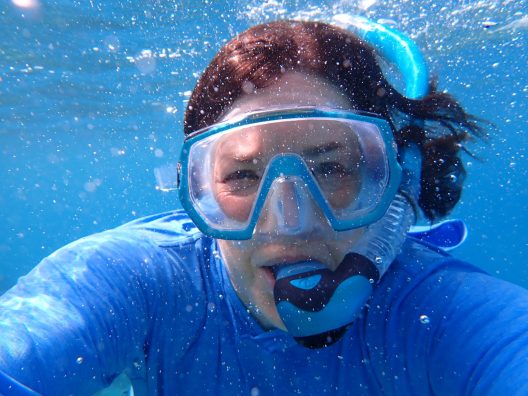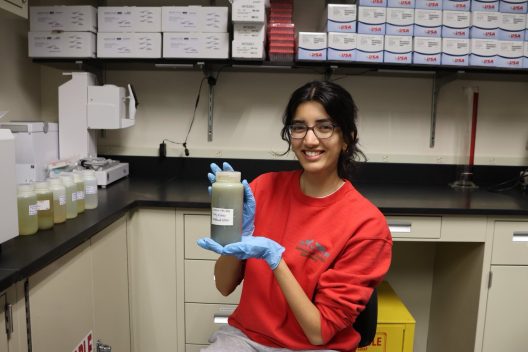Without a trace: How is Russian seafood ending up on US plates?
Whether it is food or clothing, people care about where their products come from, for a myriad of reasons. Seafood is no different. Governments, retailers, and customers care about the source of the seafood on their plate as it is an important factor for evaluating the product’s sustainability and whether it aligns with their values. In a new perspective piece published in npj Ocean Sustainability on Feb. 27, 2025, Jessica Gephart worked with a team of researchers to look into a specific case of seafood traceability in relation to US imports after sanctions on Russia.
Seafood was a target of import restrictions imposed by Russia following the first round of sanctions in response to the 2014 invasion of Crimea. The US responded with a Russian seafood import ban as a result of the current war in Ukraine. What the team found was perhaps contrary to what you might expect as a result of international sanctions. “We found that while Russian imports of seafood products from sanctioning countries declined by nearly 60%, this was substituted with increased imports from other countries. Meanwhile, exports of Russia’s own seafood were essentially unaffected, with intermediary countries playing an important role,” said Jessica Gephart, assistant professor at the University of Washington School of Aquatic and Fishery Sciences (UW SAFS).
Furthermore, they showed that prior to the US ban on Russian seafood imports, 96% of Russian seafood consumed in the US was imported from a country other than Russia, primarily China. This means that vast majority of Russian seafood destined for the US would likely not indicate that it was harvested by Russia under the current country of origin labeling rules, without additional reporting requirements.
This scenario of how complex trade patterns can elude enforcement efforts in the case of trade restrictions against Russia was revealed using the Aquatic Resource Trade in Species (ARTIS) database, which estimates aquatic food flows by origin and species while accounting for foreign processing. “A key challenge is that when seafood undergoes processing in an intermediate country, such as being processed from a whole fish into a fillet, it becomes a product of the processing country under current rules,” Jessica said. “Without additional requirements to retain information on the harvesting country, we therefore generally lose that information.”
The question remains: how is Russian seafood entering the US after sanctions? The team quantified the pathways through which Russian-harvested products move into the US, revealing that 89% of Russian seafood continued to move through China, with the majority, by volume, being Alaska pollock, Atlantic cod, or pink salmon.
“We chose this trade path because it was, and remains, a current issue. Various stakeholders were calling to close the ‘processing loophole’ for Russian seafood, but what we show is that the processing loophole is substantial in this case, but the existing tools are insufficient for closing it,” Jessica noted. “Through this case, we illustrate the broader traceability challenge for policies aimed at other goals, such as sourcing from sustainable stocks or eliminating illegal, unregulated, and unreported fishing from US supply chains, for which knowing who harvested seafood is a critical piece of information.”
Some of the recommendations for strengthening traceability and regulation of seafood imports that emerged from this research include expanding the coverage of existing programs such as the US Seafood Monitoring Program (SIMP). Currently, this program only covers around half of US seafood imports. “The US has been a leader in promoting sustainable fisheries and SIMP represents an important step for ensuring our imported seafood is sourced legally so that our domestic fisheries are competing on a level playing field. Yet, to strengthen the effectiveness of the program, we recommend expanding the program to cover all seafood products, expanding support for the implementation of SIMP, making at least some of the SIMP data publicly available to enable government-researcher collaborations, and coordinate with other nations’ seafood import programs to align data collection so that we can better target seafood import inspections,” Jessica said.
The team involved in this study included four professors from the University of Washington—Jessica Gephart (UW SAFS), Christopher Anderson (UW SAFS), Lorenz Hauser (UW SAFS), and Tabitha Mallory (Jackson School of International Studies)—and scientists from American University, Duke University, John Hopkins University, Simeone Consulting, and University of Florida.
Birdsong, insects, and streams: How are King County’s riparian habitats faring?
It’s not just fish being studied at SAFS. Undergraduates get to learn about a huge range of species, from teeny tiny parasites and insects, to seabirds and the largest mammals on Earth. And it’s not just animals either. It’s all the habitats in which these animals live and depend on. For Stevan Pekich, birds are his thing. “I have always been a huge fan of birds and have done as much as possible to integrate them as much as I could into my SAFS major,” he said. Stevan is an undergraduate in his senior year, double majoring in SAFS and Environmental Science. “This led me to working on Giordano (Gio) Jacuzzi’s project within the Olden Lab last year where I was helping identify bird calls.” Using the skills he picked up while volunteering on Gio’s project, Stevan is now working with Gio as his partner and mentor on his capstone project.
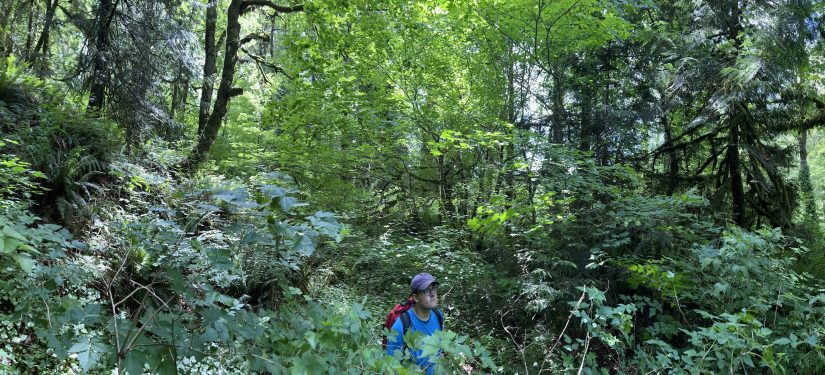
For Stevan’s capstone project, which is the final research step for an undergraduate before majoring in aquatic and fishery sciences, he is exploring how urbanization and insect health are affecting riparian-obligate bird species in our local King County. “Riparian habitat refers to transitional areas between land and water, such as rivers and streams. Riparian habitat typically includes rich soil, lush vegetation, and abundant aquatic insect populations that are important for many species,” Stevan said. “Riparian-obligate species are ones that require riparian habitat at some point in their life history, such as for nesting or foraging, and are often heavily affected by destruction or degradation of riparian areas.”
Stevan’s research includes species such as Willow Flycatchers and Wilson’s warblers that rely on riparian areas for habitat and insects to eat. He is examining if the health of insects and level of urbanization are affecting whether or not these birds are visiting King County’s riparian habitat. Although only 2% of King County is classed as riparian habitat, over 50% of the wildlife in Western Washington use riparian habitat frequently.
Visiting 30 different sites in the summer of 2024 along streams in King County, Stevan and Gio set up microphones to gather acoustic recordings. These acoustic devices were scheduled to record periodically during the times of the day that birds are most vocal. “The sites represented a gradient of high-low levels of insect health measured by the King County Department of Natural Resources, as well as a gradient of high-low levels of urbanization measured using GIS tools and datasets to identify impervious areas around each site,” Stevan said. The term high-low levels means the sites represent a range of insect health and diversity, ranging from poor levels where there are low levels of insect health to high levels where aquatic insect species are abundant. And the same for urbanization: high urbanization refers to sites with a high percentage of impervious surfaces and low urbanization meaning there is not much impervious surface around the site.
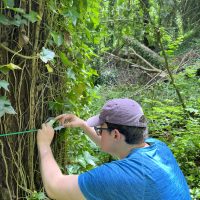
After the summer monitoring period was over, Stevan returned to collect each of the acoustic recording units, with the next step to conduct a deep dive into the audio data. “Using a model that is able to parse through the recordings and pick out and identify bird calls, one of my tasks is to make sure the model is accurately identifying the calls,” Stevan said. “To do this, I will be going in and manually listening to a few of the segments to make sure at least one of each bird species identified is present at each site.” Currently working on this stage of the project, we wondered how Stevan was able to identify which bird made which call. “I am able to identify the birds by their calls by looking at the spectrogram of the call and comparing it to known spectrograms of other recordings. I compare the shape and range of frequency of the spectrogram and can determine from there the species,” he shared. “Many bird species have multiple different calls and sounds that they make, so this can be a bit time consuming if I have to search through all the different types of songs and chirps.”

The findings of Stevan’s research—i.e. what birds were present where, and how many—will be important in the conservation and restoration of riparian habitat and riparian-obligate species. “Knowing just how much urbanization and insect health are contributing to habitat usage will be key in gauging success in stream restoration projects and riparian-obligate conservation plans,” Stevan shared. One of the programs Stevan and Gio came across in their background research was the King County Small Habitat Restoration Program, which restores streams by planting native vegetation, removing fish migration barriers, and removing invasive plants.
The capstone projects available to undergraduates completing their majors at SAFS are vast and varied. They also present a wide array of opportunities from working in the field on data collection to working in the lab on data analysis. For Stevan, his favorite part was the fieldwork. “I really enjoyed being able to go out into streams around King County to set up the microphones. Even though it got a bit thorny bushwhacking through blackberries, it was very cool to see the shift from how very urbanized streams look versus more natural and pristine ones, and what sort of vegetation and wildlife was there,” he said. “Also, being a huge birder, I was definitely a fan of listening to the bird recordings we got—it was like bird watching in 30 different places at once over a whole summer.”
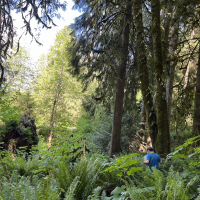
One piece of advice we hear time and time again from students who have studied at SAFS is to make use of the academic and advising resources available, which provide connections and networking opportunities that lead to research. “The advising and academic resources available to me are what led me to find prior research opportunities that have helped me pursue my capstone. Building knowledge in quantitative analyses and ecological processes has been especially helpful throughout my capstone,” Stevan said. “With my double major, I feel that each makes me more specialized and able to pursue research and career opportunities in a variety of different fields in both aquatic and terrestrial ecosystems.”
So, what’s next for Stevan when he graduates in Spring? “I hope to move back home to Anchorage, Alaska where I grew up to pursue a career in natural resource management. I know that my experiences in SAFS have made me uniquely qualified for many of the management projects in Alaska and I’m excited to get started with managing terrestrial and aquatic resources. My capstone has helped me a lot with developing some of the technical skills with GIS and quantitative analyses via R-Studio that will be applicable to a career in natural resources,” he said.
Working with Gio and working on his own capstone project is not the only research experience that Stevan has been involved in while an undergraduate at SAFS. “Last summer I was an intern with Defenders of Wildlife helping on their conceptual plan to reintroduce southern sea otters to northern California and Oregon,” Stevan shared. “ I think that being in SAFS really set me apart from the other applicants, as the role required working with commercial fishery catch and species data. I have found that this internship has set me up for success as I am pursuing career opportunities up in Alaska, and I owe a large part of that to the opportunities and experiences I pursued in SAFS!”
Curious to read what other undergraduates are up to during their studies? Check out their stories:
Scientists pilot a new method to measure the health of wild polar bears
Climate change threatens the health of polar bears across the Arctic. A study published in Conservation Physiology on March 5, introduces a new approach to measuring the health of polar bear populations, drawing inspiration from a well-known concept in human medicine: allostatic load.
Allostatic load refers to the “wear and tear” on the body that results from chronic stress. In humans, high allostatic load increases the risk for disease and death. A team of scientists used allostatic load principles to create a health scoring model for polar bears in Alaska and Canada’s Southern Beaufort Sea, where the population has declined by 25-50%. The model included measures of nutritional, immune, and chronic stress—factors that are all highly relevant, given the threats facing polar bears. This project was carried out by biologists from the University of Washington School of Aquatic and Fishery Sciences (UW SAFS), United States Geological Survey (USGS), and Fish and Wildlife Health Consulting.
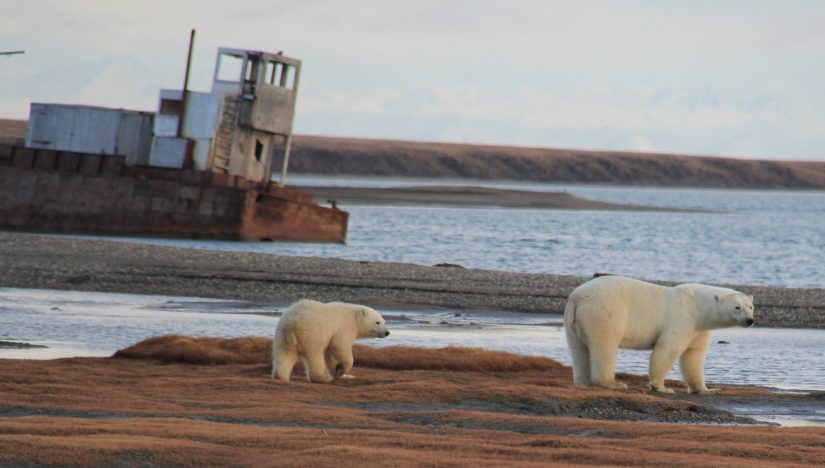
Polar bears depend on sea ice as a hunting platform, and ice loss can lead to poorer nutritional condition. In summer and fall, when the ice retreats northward, bears in the Southern Beaufort Sea must choose between following the ice into less productive hunting areas or moving onto land until the ice refreezes. Increasingly, bears are coming ashore and scavenging human-provisioned foods—an option that may expose them to new pathogens and increase disease risk. Additionally, coming ashore heightens bears’ exposure to human disturbance in areas of expanding oil and gas development, potentially adding further stress to an already vulnerable population.
“Trying to survive with so many stressors is like carrying a backpack that keeps getting heavier. Eventually, it becomes too much to bear,” said Sarah Teman, lead author of the study and UW PhD student working with UW Professor, Kristin Laidre. “By studying allostatic load, we can understand how much ‘weight’ each bear is carrying, and how that affects populations.”
The scientists measured allostatic load through a suite of samples collected from polar bears during annual population health assessments. This involved analyzing blood samples to assess metabolism, fluid balance, organ function, and immune cells, along with hair samples to measure cortisol, a stress hormone.
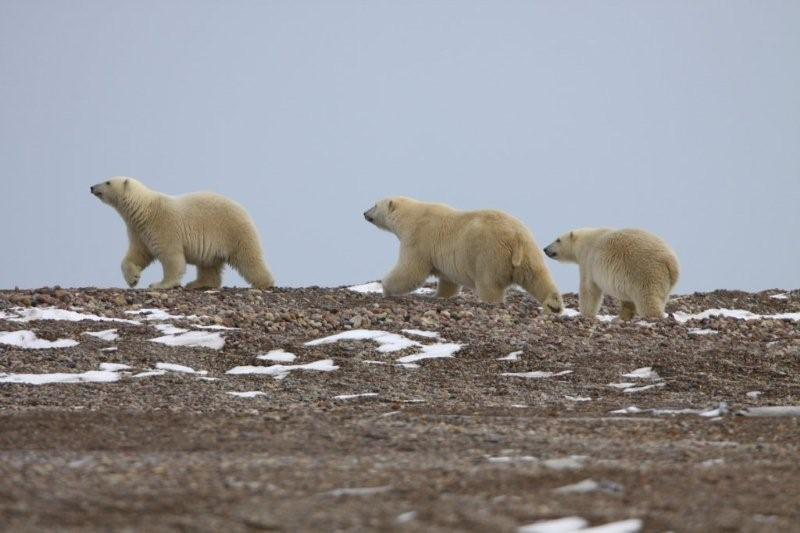
One finding stood out to the team: adult females that summer on land have higher allostatic load than those that remain on the sea ice. This may be driven by onshore food sources that fail to meet their nutritional needs, coupled with immune stress. The number of adult females summering on land has tripled over the last few decades, as the length of the sea ice melt season has increased.
Other findings contradicted the scientists’ predictions. For instance, they found no overall trend of increasing allostatic load across the population. However, at the individual level, allostatic load fluctuated—rising in some bears over time, while decreasing in others. This suggests that allostatic load may be best understood through individual monitoring. The next step is to link measures of individual health to population vital rates, such as reproductive success.
“Now more than ever, it’s important to develop tools to measure polar bear health,” Teman said. “This gives us insight into the stressors they face, and how we can support their survival in a changing Arctic.”
For more information, contact Sarah Teman at steman@uw.edu
Why study at SAFS? Because you absolutely love fish!
What inspires our undergraduates to pursue a degree all about aquatic and fishery science? We caught up with Eli Nettlebeck—a junior at SAFS, a transfer student from Seattle Central College, and someone who loves fish.
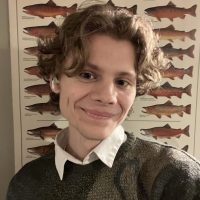
I absolutely love fish. I had seven fish tanks when I was a kid, and was completely enamored by how funny a lot of them behave and look. Some of my favorite fish I ever kept were Garra Rufa, or “doctor fish.” They had tons of energy; sometimes, when I stuck my hand in my tank, they would nibble on the dead skin. I already spend hours of my day reading and watching videos about fish, so I figured studying them was probably the next best step for me!
I’m originally from Poulsbo, Washington. I did running start through Olympic College when I was in High School, then took a couple of gap years after I graduated to figure out what I wanted to do. Once I realized that fish was the way, I started taking some prerequisites for the AFS (Aquatic and Fishery Sciences) Major at Seattle Central College since I was already living in Seattle at the time! Honestly for me the hardest part of transferring to UW was writing the application essay. I knew that since I had gotten most of the credits out of the way in running start and through Seattle Central, I had a fairly good chance of getting in, but writing the essay was daunting because it was so broad.
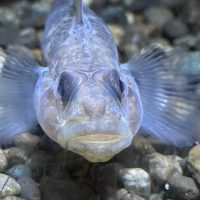
Since I’m so into fish, I decided to start planning my capstone when I started my first quarter to maximize the time I have working on it. I’m hoping to identify the status of hermaphroditism within a species or genus of goby that hasn’t been known whether it expresses hermaphroditic tendencies or not. I’ve started this process by evaluating almost all the species within the family Gobiidae to identify any common traits within the hermaphroditic genera of the family. I will most likely be doing this under the guidance of Luke Tornabene and his lab: Fish Systematics and Biodiversity.
I’m so thankful that I’ve had the opportunity to learn as much as I have already through SAFS, especially when taking Fish 311: Biology of Fishes. I am also so thankful for all of the staff that have helped me so far on my academic journey!
Microplastics and their macro problems: UW Daily speaks to Jacqueline Padilla-Gamiño
Who’s who? Using identification tools to tell freshwater sculpin apart
Scanning through the rows and rows of preserved fish housed in the UW Fish Collection, it’s easy to get lost trying to figure out what each fish is, especially to the untrained eye. Fish identification is a necessary step when preserving specimens from the wild, which deliver key insights for researchers delving into the untold secrets of fish. What fish is it? Male or female? What age? Where was it collected from? These are just some questions answered before they’re put in jars to preserve for the future.
For Liam Aston, an undergraduate in his final year at SAFS, his capstone research involves Cottus, a group of freshwater sculpin found throughout the Northern Hemisphere. Although sculpin are found in both marine and freshwater environments, Liam is specifically focusing on the clade of Cottus found in Washington and two freshwater sculpins: Cottus gulosus (inland riffle sculpin) and Cottus perplexus (Reticulate sculpin). “These species are often confused in identification due to the overlap in identifying characters, leaving it to be decided by a coinflip most times,” Liam shared. “Determining which dichotomous keys – also known as identification tools – lack characters will further help identify sculpin in the future.”
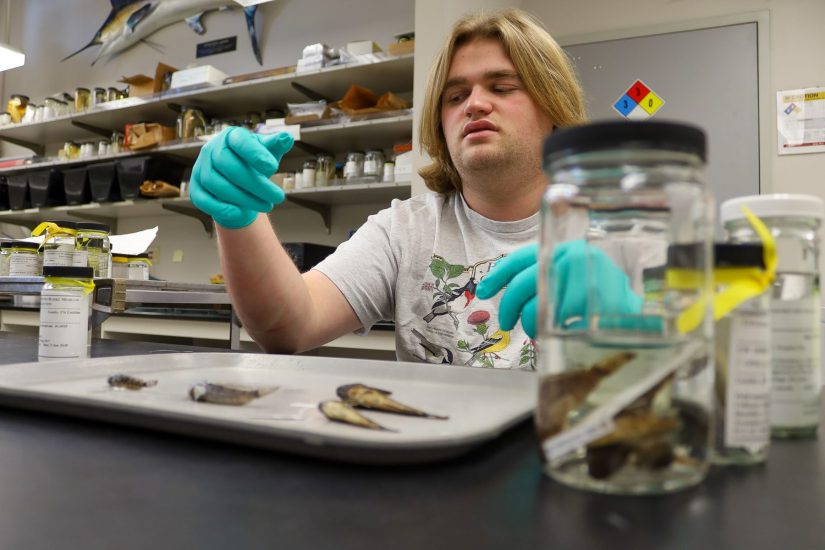
Some of the characters found in keys used to identify sculpin are standard length (snout to the hypural plate), depth of fins, height of the dorsal connection, and mouth width. Part of Liam’s analysis of keys will also help to determine at what step identification error happens and therefore improve the process as a result. “I have been taking measurements of all the sculpins that are on the phylogenetic tree – also known as the family tree – completed by Álvaro Cortés, Vertebrate Collections Manager at Oregon State University. Using these measurements in combination with the tree, I will be able to create models to determine if there are any characters separating the species,” Liam said.
At SAFS, the capstone research project is the culmination of the undergraduate experience, an exciting opportunity to put classroom learning into practice and allow students to make a lasting contribution to aquatic and fishery science. For Liam, he chose to work with the UW Fish Collection’s Curator of Fishes, Luke Tornabene. “I had been interested in the work of the Fish Collection since I took FISH 311 with Luke in sophomore year, so this was a great opportunity to finish off my SAFS degree,” Liam said.
- Cottus asper (UW 158706)
- Cottus perplexus (UW 156980)
- Cottus gulosus (UW 159961)
When asked what his favorite part of his capstone research has been so far, Liam had a couple of things to share: “Going up to Friday Harbor Labs to use their modern CT scanner was pretty awesome because, for one, you get to visit the San Juan Islands, and two, using a CT scanner to scan a fish is cool.” A modern CT scanner takes roughly 30 minutes to scan a fish, when in the past, it would take 4-5 hours per fish! “It’s also been fun to learn from Katherine Maslenikov (Collections Manager) and Luke to gain a better understanding of taxonomy and the Fish Collection as a whole,” Liam added. Taxonomy is the scientific study of classifying, describing, and naming organisms.
If you’ve paid close attention to CT images or photos of fish specimens, they’re usually lying on their right sides, with their left sides featured in the image. Ever wondered why? This is because the standard in museum specimens is to cut material or take genetic samples from the right side of a fish, leaving the left side intact. So when you see the photos or scans of fish, they’re usually facing all the same way!
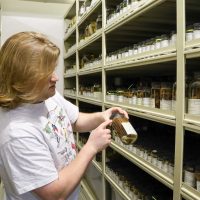
CT scanning is a very important tool when it comes to fish specimens. “One key identifying characteristic of freshwater sculpin is the internal presence of palatine teeth. The standard method to determine the presence of palatine teeth requires the jaw of the fish to be pried open, which can damage the specimen and still leaves uncertainty in the determination of palatine teeth presence,” Liam said. “Using the CT Scanner maintains the fish collection specimens held by the University of Washington and Oregon State University, and allows for the determination of palatine teeth to be certain. For the project I’m working on, many external counts and measurements need to be taken, but existing damage on collection specimens prevents accurate data from being collected. The CT Scanner circumnavigates the issue allowing accurate counts and measurements to be taken, plus these models can also show internal features that wouldn’t have been recognized just visually looking at fish specimens.”
- A side-on view of a Cottus gulosus via a CT Scan.
- Highlighting palatine teeth, this CT scan of Cottus gulosus is oriented looking up from the bottom.
One of the ways in which undergraduates conduct research for their capstone project is by working on research questions posed by faculty members. In Liam’s case, this happened to be freshwater sculpin. “I was most interested in freshwater fish, but I also wanted to do something involving speciation and phylogenetics. I wasn’t expecting to be separating species using morphometrics (for example, shape, form or size), but it has definitely grown my interest in taxonomy as a result,” Liam said.
As a culminating requirement of the SAFS degree, a key aim of a capstone is to put into practice the teaching and learning occurring over an undergraduate’s journey through SAFS classes. “A number of the classes I’ve taken while at SAFS have helped me with my research. FISH 311 introduced me to taxonomy and gave me a really strong understanding of phylogenetic trees and actually working through taxonomic keys, which has been a big part of this research to understand where the differences in species identification comes from,” Liam said. “FISH 290 helped me learn to read and understand scientific literature which has proved useful when going through literature for this project.”
Interested in other SAFS undergraduate research stories?
Unravelling the mystery of the missing blue whale calves
Only two blue whale births have ever been recorded in human history, both decades ago. This remains an extraordinary mystery given there used to be hundreds of thousands of blue whales before whaling started (even now they number around 10,000-25,000)—and they give birth every two to three years.
Not only are births very stealthy, but calves are also only rarely sighted—far less than would be expected from their pregnancy rates. Calves closely follow their moms and are sighted as mother-calf pairs, but why are so few detected?
A new University of Washington study, published Feb. 21 in Endangered Species Research, proposes why. Its explanation hints at when and where the unseen births are happening and where blue whale calves spend their earliest months. The findings offer some hope for the health of the population.
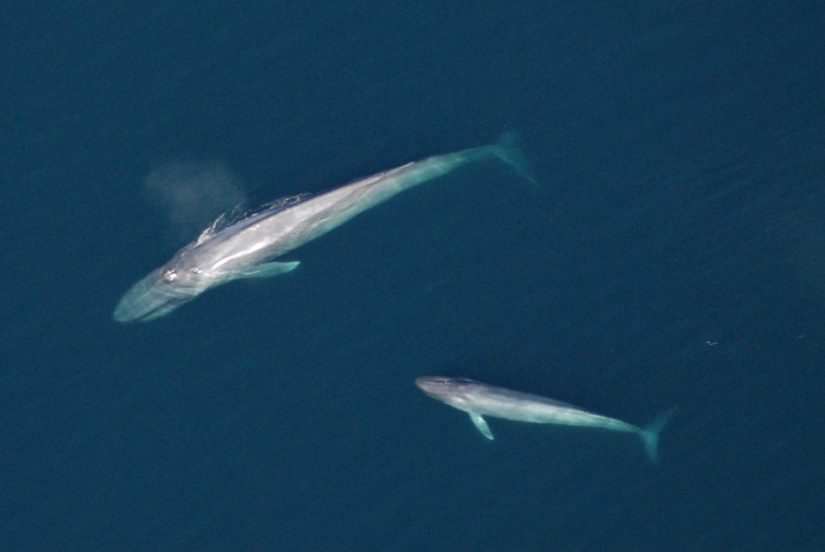
Trevor Branch, a UW Professor of Aquatic and Fishery Sciences who studies blue whales, set out to unravel this mystery by looking at a range of hypotheses. He proposes that one in particular is the best explanation: it’s mostly because researchers prefer summertime research on feeding congregations of blue whales, but calves are born in fall and winter, and are weaned before they return to feeding areas.
In summer, blue whales migrate to feed in colder regions where krill is plentiful: for example, off California. In winter, when ready to give birth, they return to warmer regions like the Gulf of California and the eastern tropical Pacific. Around seven months after being born, and already at a whopping 52 feet (16 meters) long, the calves are weaned and stop associating with their mothers.
But across various blue whale populations, high pregnancy rates of 33-50% annually seem to contradict the average 3.1% rate of sightings of blue whales involving mother-calf pairs.

When compared with other hypotheses to explain the mystery of why so few calves are observed, such as low fetal survival, low calf survival, low birth rates, or calf separation from mother, Branch discovered that the timing hypothesis best explained observed patterns.
“My conceptual model can explain the mystery of the missing calves: blue whales produce calves, or give birth, shortly after departing their summer feeding grounds, and wean their calves seven months later, just before they return”, Branch said.
This would explain why researchers – most of whom conduct blue whale field studies in summer months – seldom sight mothers with calves.
Branch compiled data from long-term field studies and combined this with biological information from historical whaling records to come up with this hypothesis, finding higher proportions of calves in winter regions, and lower proportions in summer regions. He is now coordinating a large collaboration to test the idea with field data by month in each region, combined with estimates of the size of calves by month.
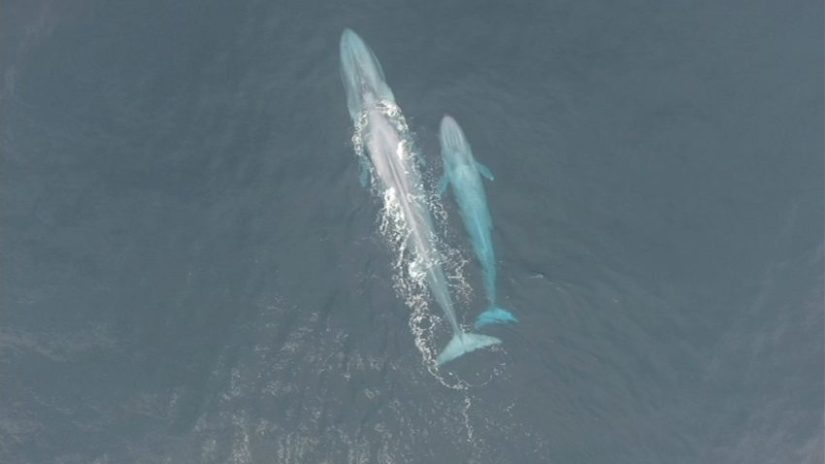
One concern about low calf sighting rates was that this might be a warning signal of low birth rates or low survival of calves. Instead, the new hypothesis offers up some hope that higher number of calves could be sighted from field studies concentrated in regions that blue whales travel to in winter and spring.
“This new idea provides an alternative explanation for why some blue whale populations appear to produce very few calves: It’s not a failure of calf production, it’s because fieldwork in those populations is understandably concentrated in easily accessible summer feeding areas,” Branch said.
The research was funded in part by the International Whaling Commission’s Southern Ocean Research Partnership (IWC-SORP).
For more information, contact Trevor Branch at tbranch@uw.edu.
Celebrating Women in Science
10 years ago, the UN declared 11 February as the International Day of Women and Girls in Science. On this 10th anniversary at the University of Washington, we’re celebrating our women in aquatic and marine science: women who are leaders in their fields, women who are aspiring to be the next generation of fisheries scientists and marine biologists, women who are uplifting and supporting other women in science.
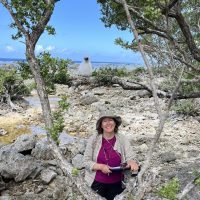
At the School of Aquatic and Fishery Sciences and Marine Biology, one of the aspects we’re celebrating is how many female faculty and research program leaders we have teaching the new cohorts of students who join our programs each year. “Even as recently as 50 years ago, there were few, if any, women who were leading research programs in universities and government agencies. If it weren’t for a lot of women, and men, who thought that should change, I wouldn’t be where I am today,” said Sarah Converse, Associate Professor and Unit Leader at the Washington Cooperative Fish and Wildlife Research Unit (WACFWRU). “I try to remember that and to be thankful for those leaders.”
Speaking with researchers and students — from technicians and postdocs to graduate students and undergraduates — the decision to pursue a career in science has been inspired by a myriad of reasons, many of them other women. “I was inspired by my grandmother. I remember falling in love with the field the first time I looked at mosquito larvae from my backyard using a kid’s microscope my grandma bought me and my brothers,” shared Callie Murakami, a SAFS undergraduate. For freshwater ecologist and wildlife biologist, and postdoc as SAFS, Aashna Sharma, her mother was her inspiration. “She is a woman in science, though her circumstances didn’t allow her to pursue a career as a scientist. Instead, she became a science teacher and my role model, and her passion for teaching and unwavering curiosity shaped my own love for science and my determination to pursue it as a profession.”
- Callie Murakami, undergraduate researcher in aquatic science.
- Naomi Prahl and Emma Meyer, aspiring salmon ecologists.
For others, science was the answer to curiosity. “Science provided me with the perfect environment to explore my curiosity, offering endless opportunities for discovery and learning,” said Raquel Ruiz Diaz, a fisheries scientist. “The idea that my work could also make a meaningful difference is both motivating and rewarding.” For Marjorie Wonham, a marine ecologist and invertebrate zoologist, and Associate Teaching Faculty, she was hooked the first time she dissected a sea cucumber and encountered its technicolor insides: “Scientific research and teaching are a heady combination of inquiry and surprise, and what they reveal to us about the workings of the natural world is nothing short of incredible.”
So what does it mean to be a woman in science in 2025? “It means to believe in myself and have no limits,” said undergraduate marine biologist, April Morrow. “It’s to acknowledge that a diverse array of perspectives and backgrounds facilitates better science, research, community, and life,” shared Marine Biologist student, Clara Kreutziger. “I’m so grateful to my supervisor for her genuine enthusiasm, reassurance, and support in my educational and professional journey, and I’m inspired to be similarly uplifting to all those around me,” said Mugdha Chiplunkar, a sophomore studying Marine Biology.
- Marjorie Wonham, Associate Teaching Faculty, in Moorea.
- Mugdha Chiplunkar, Marine Biology sophomore.
Claire Vaage, a freshwater ecologist and graduate student at SAFS had a powerful message: “My innate interests have led me into spaces where my identity, as a woman, incites a sense of shock. A passion for mountain biking led me to work as the only female bicycle mechanic in a shop during my undergrad. A drive for political action brought me to represent my peers, and one of only a few women, in the Idaho State Capitol. A love for aquatic ecosystems propelled me to where I am now: SAFS. Representation and mutual support from fellow women granted me the tenacity to not only enter into, but lead, in these spaces. To be a woman in science is to lift while I climb and shock people while I am at it.”
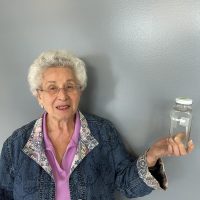
The future for science should be one of inclusivity — for all. Julia Parrish, Professor and Associate Dean for the UW College of the Environment, shared why inclusion should extend beyond the scientific community. “I believe that science is for everyone and should include everyone. Working for 30 years in citizen science has taught me that non-scientists are every bit as good at careful observation, quantitative data collection, and deduction. I want science to work more on tearing down the walls between science and society, to accept broader ways of knowing,” Julia said. “That would make science not only more approachable, but also more fun.”
This theme of inclusion and diversity was echoed by Marjorie Wonham: “STEM fields need to continue to actively foster and welcome diversity in all its beautiful forms. The social, creative, fundamental, applied, and inter- and transdisciplinary aspects of science are enhanced by the skills and perspectives of students and practitioners spanning and sharing about the dimensions of human diversity. The same holds for society.”
“I would like to see more women in higher-level positions within STEM fields,” Raquel Ruiz Diaz shared. “Representation inspires the next generation, shapes decision-making and policy to be more equitable, and sends a powerful message that we can aspire to achieve those positions.”
Happy International Day of Women and Girls in Science from our freshwater and marine ecologists, fisheries scientists, marine biologists, invertebrate zoologists, seabird biologists, quantitative ecologists, aspiring marine social scientists — just to name a few!
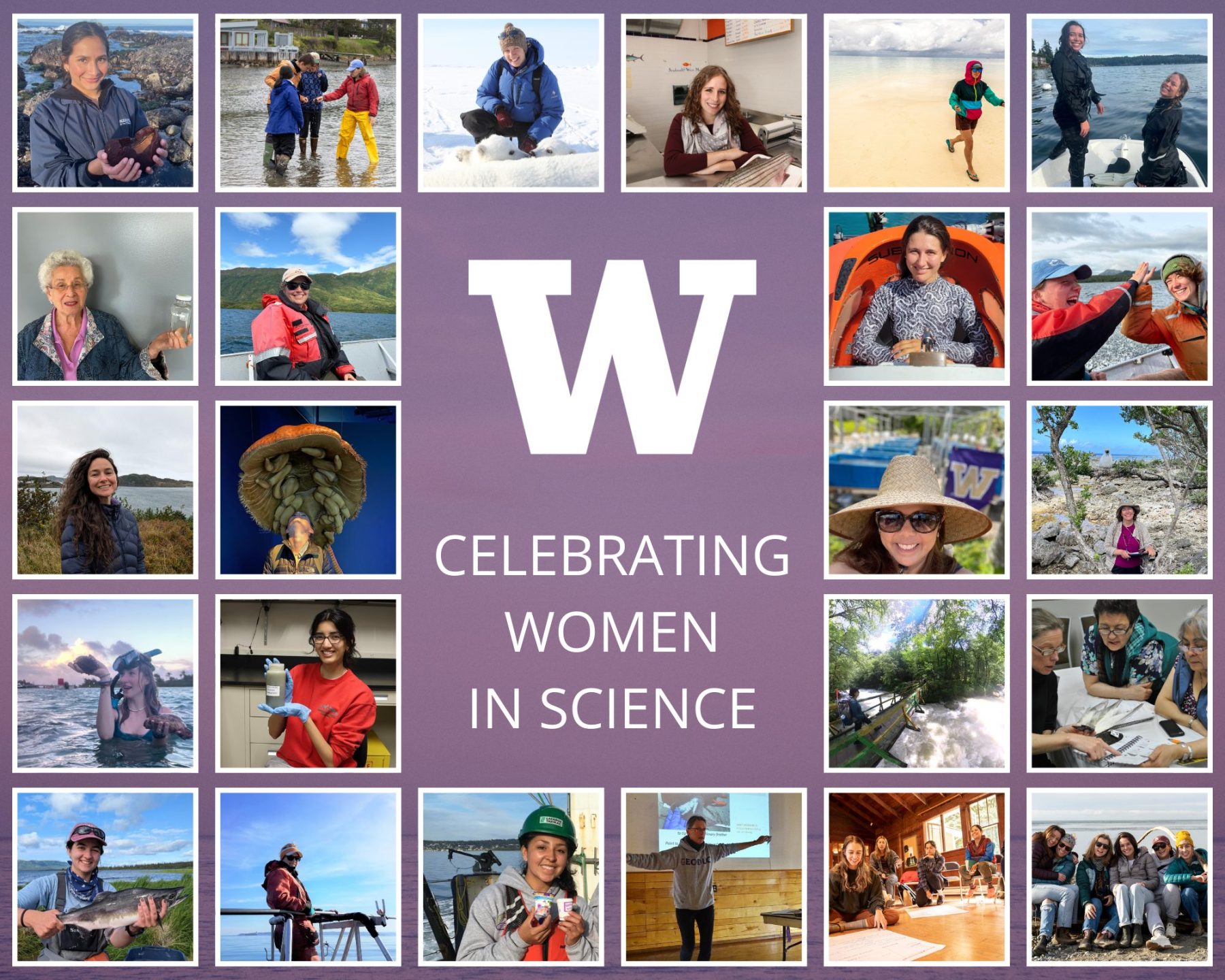
Embracing community, mentorship and interdisciplinary science during Black History Month
Interdisciplinary. Providing mentorship. Community-focused. These are just some of the terms that come to mind for Chris when she describes what it means to be a Black scientist. “When we think about being a non-majority community in STEM – and in this instance Black in STEM – we are tasked with a three-pronged responsibility because this is a lived experience for so many of us: being inherently interdisciplinary, mentoring others, focusing on your community”. Chris Mantegna is currently a graduate student at SAFS, after earning her bachelor’s degree in UW Marine Biology in 2021.
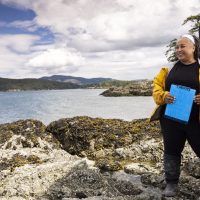
She is also a founding board member of BWEEMS (Black Women in Ecology, Evolution, and Marine Science) and created their first foundational mentorship program, has been a part of BIMS (Black in Marine Science) since its beginnings as a tweet in 2020, and collaborates with many other BIPOC-focused organizations such as Sea Potential and NABS (National Association of Black Scuba Divers). “One of the many things I love about the Black community in marine science is we’re all connected. So many organizations and groups work together – be it Sea Potential, BIMS or BWEEMS – because our numbers are so small, and water touches all of it,” Chris said.
The experience of being an excellent scientist while also shouldering the responsibility of enhancing representation and uplifting others in your community can be a challenge, but a rewarding one. “The experience of trying to be the best, while walking into a space which doesn’t always value the experience, knowledge, and lessons you’re bringing, is tough. I love Black excellence, but we also need to give ourselves the space to make excellence whatever we want,” Chris shared.
A key part of Chris’ mentorship programs, such as the Yellow Island NSF-funded Research Experience for Undergrads-Blinks internship, is to highlight that each student brings a different lived experience and view of science to the table. “A lot of us are navigating the different environments in which we grew up in, or currently live and work in, and therefore bring a different understanding to science and research,” she said.

Marine and aquatic science has been filled with pioneering contributions from Black scientists – from the first Black marine biologist, Ernest Everett Just, who pioneered understanding of cell physiology, embryonic development and fertilization, to Joan Murrell Owens, who shed light on the evolutionary relationships of corals.
This legacy continues but there is a lot of work to be done to continue the effort to increase representation in STEM and create a space where Black and other minority groups feel welcome, valued, and safe in the spaces where science is conducted: both inside and in the outdoors. “We can’t recruit students to a place that isn’t ready for them, so we should look to retain and support the students who are here,” Chris shared. “Retention starts with representation across all departmental levels and course content coupled with action-oriented allies.”
We asked Chris what a more inclusive future would look like? “I would love to see syllabi changed at the university level to include more Black scientists – be they from the US or from the Global South,” Chris said. “We need to change the way we teach to encourage more young Black scientists, and make sure the pipelines are in place from middle-school and even earlier, as that’s one place where we’re losing our future scientists”. Building community partnerships is a crucial aspect of this change that Chris would like the future to hold. “Our communities have a different lived experience, and I would like to see that acknowledged, celebrated, and brought into research and science in ways where students can see knowledge coming from the communities that resemble them”.
A global syllabus, more interrogation of teaching styles to demonstrate it can be done differently, embracing creativity around scientific the process, including community, art, and geography – these are all actionable ways that Chris shared that can make science more inclusive.
This Black History Month, Chris is sharing an important message: “Give yourself time to rest and rejuvenate. Revisit some of our strongest, most creative, or marginalized thinkers, such as Tricia Hersey (Rest is Resistance) and the writings of Octavia Butler, June Jordan and Audrey Lorde to support our imaginations in creating what can be. For more marine related writing – Pauline Alexis Gumbs and Jasmin Graham. And remember: let’s be gentler with ourselves in 2025”.
Want to learn more about some local and national organizations dedicated to celebrating and amplifying the work of Black scientists in marine and freshwater science this Black History Month? Visit:
-
BIMS – Black In Marine Science
-
BWEEMS – Black Women in Ecology, Evolution, and Marine Science
-
Sea Potential
-
MISS – Minorities In Shark Sciences
-
NABS – National Association of Black Scuba Divers
-
Black in Natural History Museums
